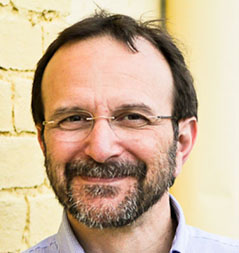TWiV reviews an outbreak of Marburg hemorrhagic fever in Equatorial Guinea, wild poliovirus type 3 shedding from a laboratory in the Netherlands, and white-tailed deer as a reservoir for previous SARS-CoV-2 variants of concern.
In his weekly clinical update Dr. Griffin discusses the political polarization of COVID-19 treatments among physicians and laypeople in the United States, seven alternatives to evidence-based medicine, Malawi’s cholera death toll crosses 1,300 in its deadliest outbreak on record, impact of coronavirus infections on pediatric patients at a tertiary pediatric hospital, maternal mRNA COVID-19 vaccination during pregnancy and delta or omicron infection or hospital admission in infants, yes masks reduce the risk of spreading infection, despite a review saying they don’t, COVID-19 and airborne transmission: science rejected, lives lost. can society do better, what were the historical reasons for the resistance to recognizing airborne transmission during the COVID-19 pandemic, a randomized trial comparing Omicron-containing boosters with the original COVID-19 vaccine mRNA-1273, SARS-CoV-2 neutralizing antibodies after bivalent vs. monovalent booster, the impacts of SARS-CoV-2 vaccine dose separation and targeting on the COVID-19 epidemic in England, intra-host evolution provides for the continuous emergence of SARS-CoV-2 variants, real-world use of Nirmatrelvir–Ritonavir in outpatients with COVID-19 during the era of Omicron variants including BA.4 and BA.5 in Colorado, viral burden rebound in hospitalized patients with COVID-19 receiving oral antivirals in Hong Kong, and guidance on the use of convalescent plasma to treat immunocompromised patients with COVID-19.
Scott returns to TWiV to explain the development of an experimental mRNA vaccine that encodes hemagglutinin antigens against all known influenza A virus subtypes and influenza B virus lineages, and why he is worried about avian H5N1 influenza virus.
In his weekly clinical update Dr. Griffin discusses the consistency of COVID-19 trial preprints with published reports and impact for decision making, the negative effect of preexisting immunity on Influenza vaccine responses transcends the impact of vaccine formulation type and vaccination history, highly pathogenic avian influenza A(H5N1) virus infection in farmed minks in Spain, Peru confirms H5N1 avian flu in marine mammals, prior vaccination enhances immune responses during SARS-CoV-2 breakthrough infection with early activation of memory T cells followed by production of potent neutralizing antibodies, bacillus Calmette-Guérin vaccine for prevention of COVID-19 and other respiratory tract infections in older adults with comorbidities, incidence of chronic spontaneous urticaria following receipt of the COVID-19 vaccine booster in Switzerland, relationship between immune response to SARS-CoV2 vaccines and development of breakthrough infection in solid organ transplant recipients, early treatment with pegylated interferon lambda for COVID-19, and how long-term high-dose immunoglobulin successfully treats long COVID patients with pulmonary, neurologic, and cardiologic symptoms.
In his weekly clinical update Dr. Griffin discusses prevalence and clinical outcomes of respiratory syncytial virus versus influenza virus in adults hospitalized with acute respiratory Illness, reconsideration of antinucleocapsid IgG antibody as a marker of SARS-CoV-2 infection postvaccination for mild COVID-19 patients, assessment of COVID-19 as the underlying cause of death among children and young people aged 0 to 19 years in the US, information for persons who are immunocompromised regarding prevention and treatment of SARS-CoV-2 Infection in the context of currently circulating Omicron sublineages, association of culturable-virus detection and household transmission of SARS-CoV-2, effectiveness of bivalent boosters against severe Omicron infection, Covid vaccines and playing the long game, efficacy and safety of antimicrobial stewardship prospective audit and feedback in patients hospitalized with COVID-19, and severe fatigue and persistent symptoms at three months following SARS-CoV-2 Infections during the pre-Delta, Delta, and Omicron time periods.
Paul Offit returns to TWiV to unpack the recent FDA Advisory Panel on COVID vaccines, with discussions on giving everyone the same bivalent vaccine, simplifying the immunization schedule, and how to know when the vaccine should be updated.
In his weekly clinical update Dr. Griffin discusses co-detections of other respiratory viruses among children hospitalized with COVID-19, preprint review should form part of PhD programs and postdoc training, early and increased Influenza activity among children, COVID-19 vaccines versus pediatric hospitalization, SARS-CoV-2 variant-related abnormalities detected by prenatal MRI, protective effectiveness of previous SARS-CoV-2 infection and hybrid immunity against the Omicron variant and severe disease, protective effectiveness of previous SARS-CoV-2 infection and hybrid immunity against the omicron variant and severe disease, persistent COVID-19 Symptoms at 6 months after onset and the role of vaccination before or after SARS-COV-2 infection, effect of Dexamethasone use on viral clearance among patients with COVID-19, and the impact of vaccination on post-acute sequelae of SARS CoV-2 infection in patients with rheumatic diseases.
TWiV covers a study of SARS-CoV-2 persistence at multiple sites in the human body, and the role of endogenous retroviruses in ageing and senescence.
In his weekly clinical update Dr. Griffin discusses China reporting almost 60,000 Covid-related deaths after abrupt shift in policy, detection of SARS-CoV-2 IgA and IgG in human milk and breastfeeding infant stool 6 months after maternal COVID-19 vaccination, effect of Fluvoxamine vs placebo on time to sustained recovery in outpatients with mild to moderate COVID-19, hyperimmune globulin for severely immunocompromised patients hospitalized with COVID-19, long COVID outcomes at one year after mild SARS-CoV-2 infection, long COVID: major findings, mechanisms and recommendations, a systematic review of trials currently investigating therapeutic modalities for post-acute COVID-19 syndrome and registered on World Health Organization international clinical trials platform, and the effect of using a structured pacing protocol on post-exertional symptom exacerbation and health status in a longitudinal cohort with the post-COVID-19 syndrome.
Daniela joins TWiV to discuss her career and her research on T cells, their role in infection with SARS-CoV-2, T cell epitopes and why a variant that evades T cell immunity is not likely to emerge.








